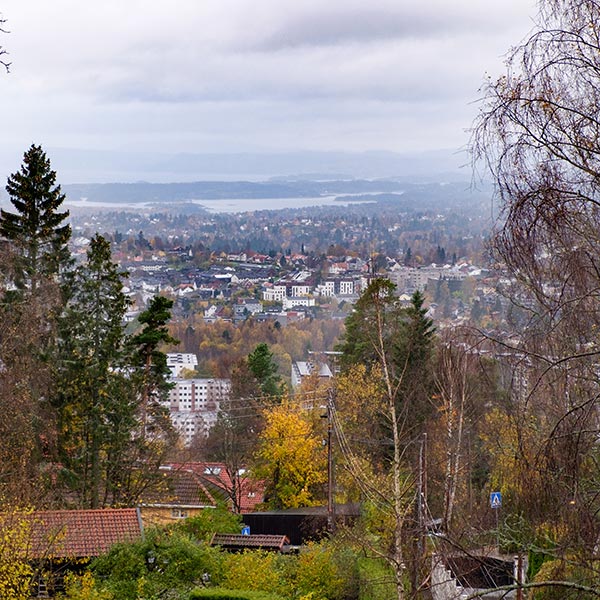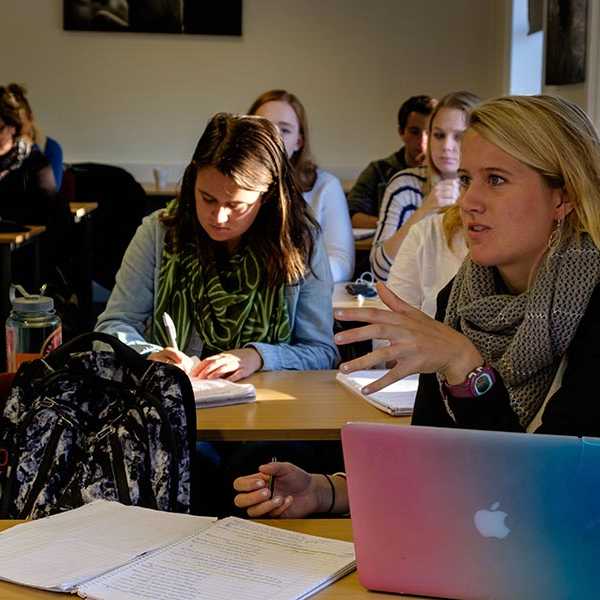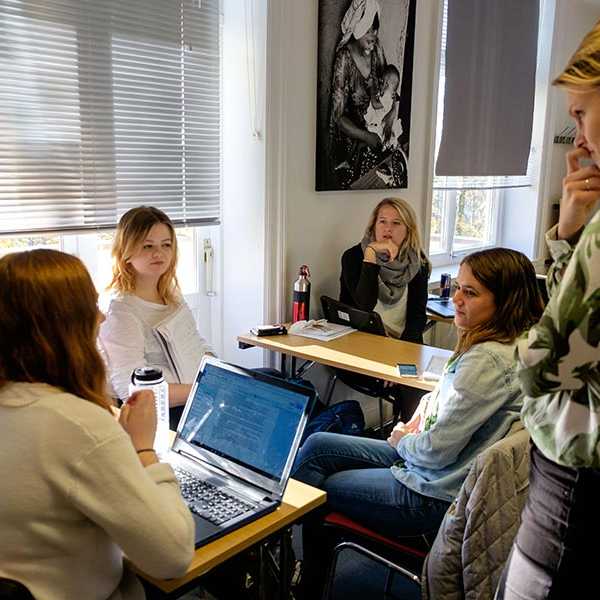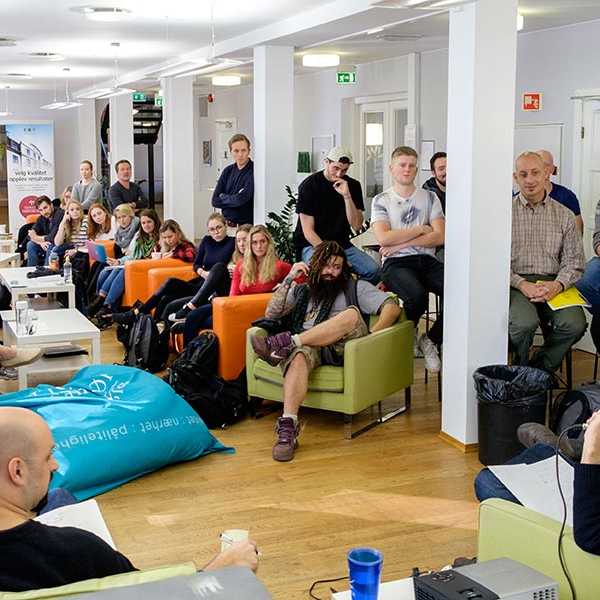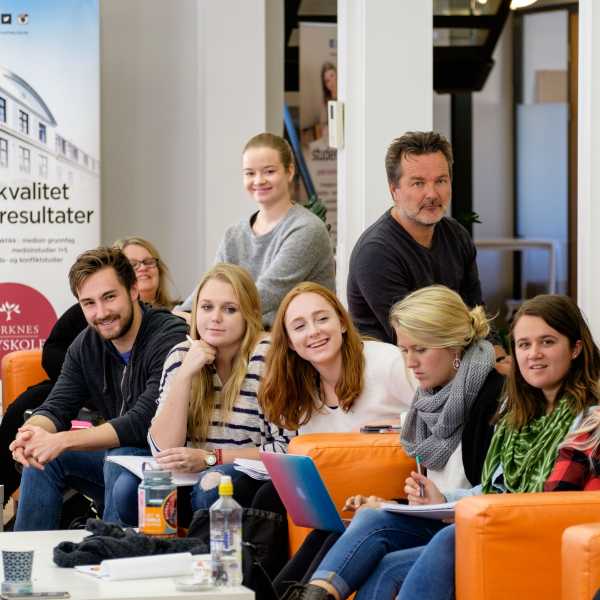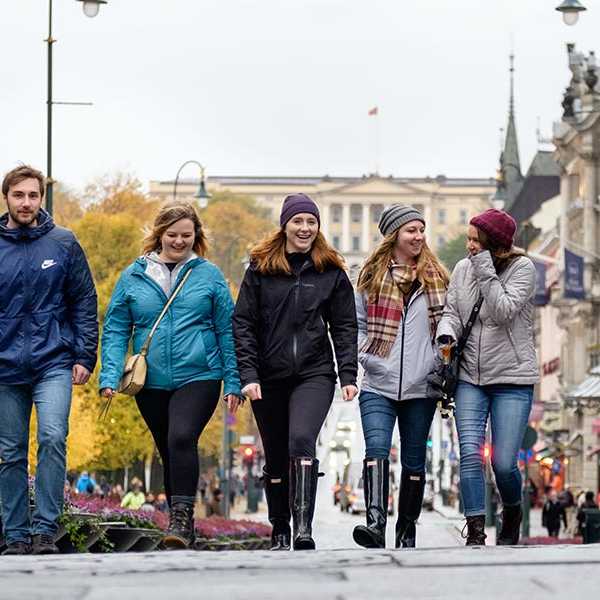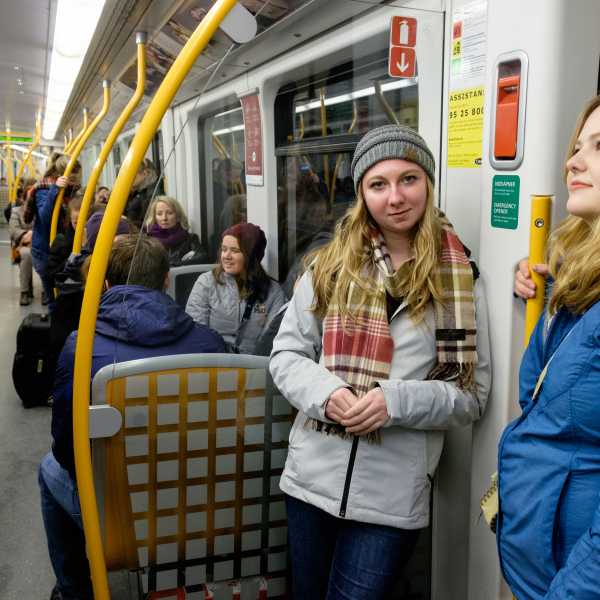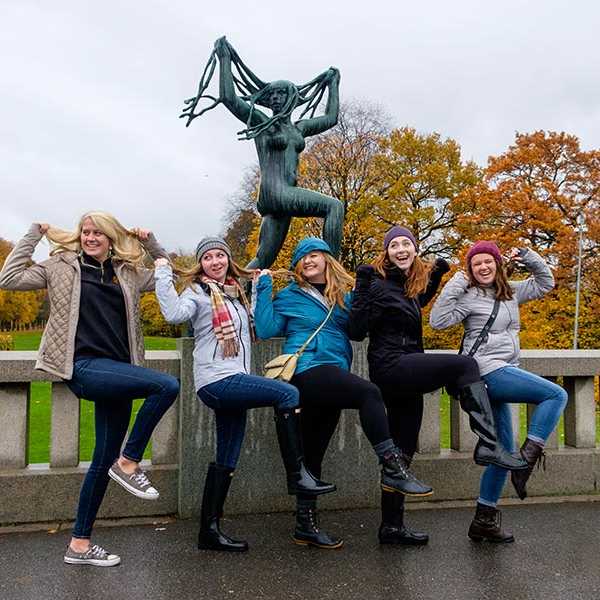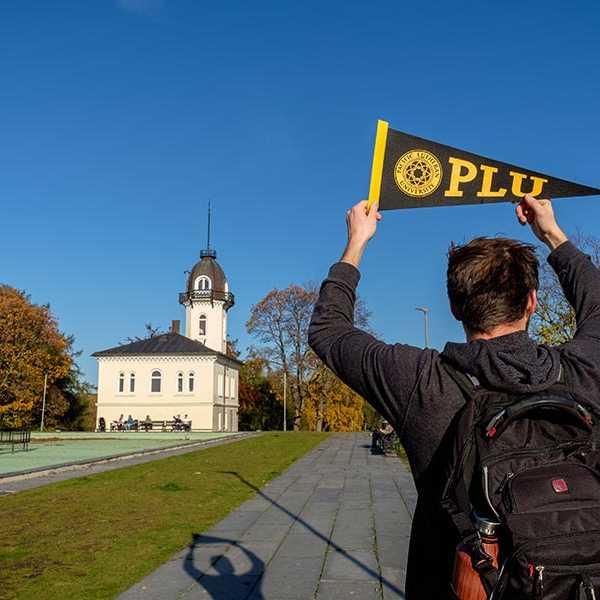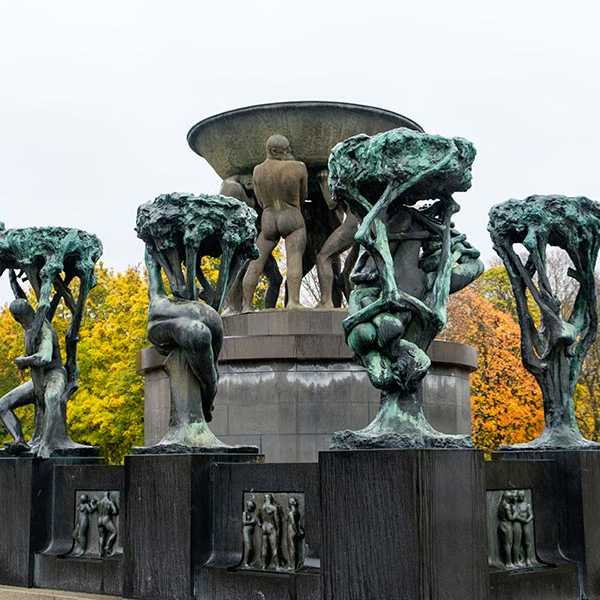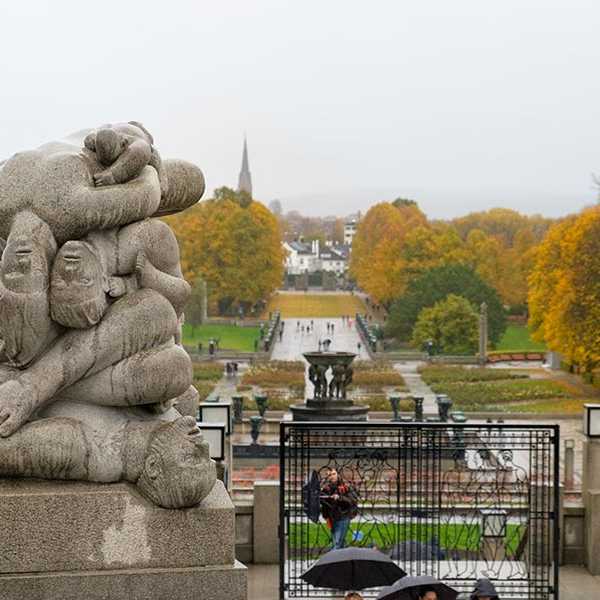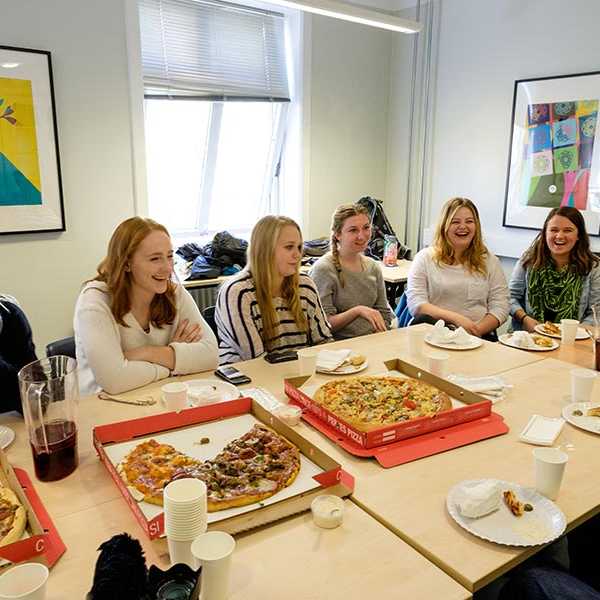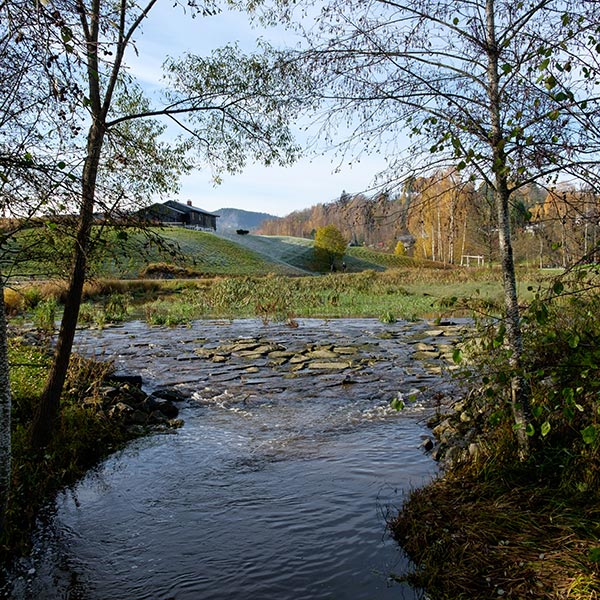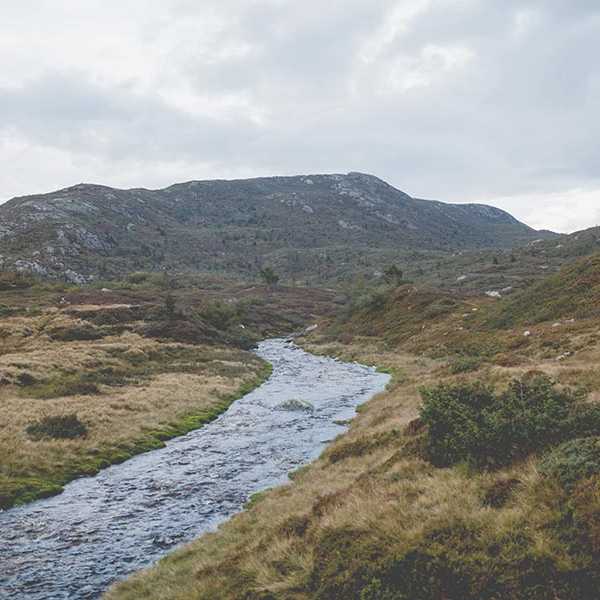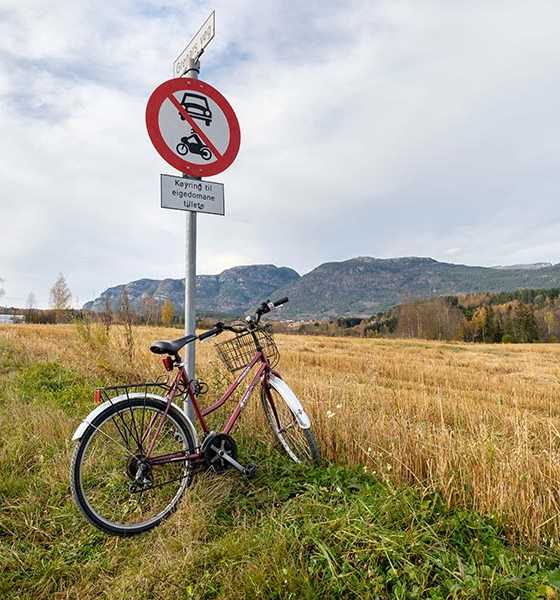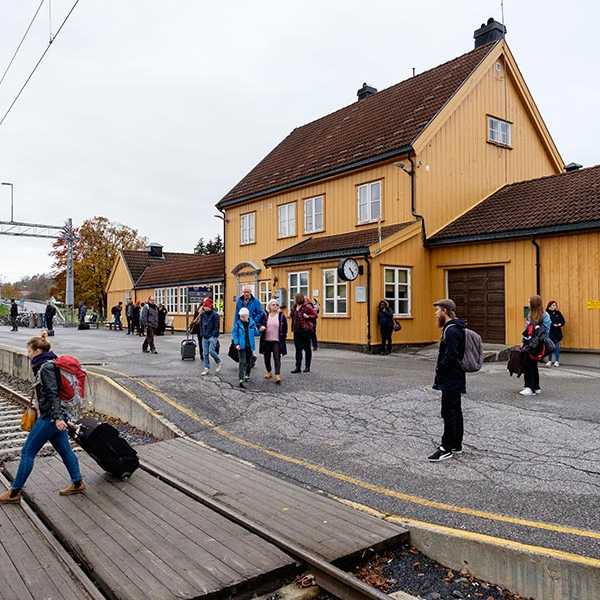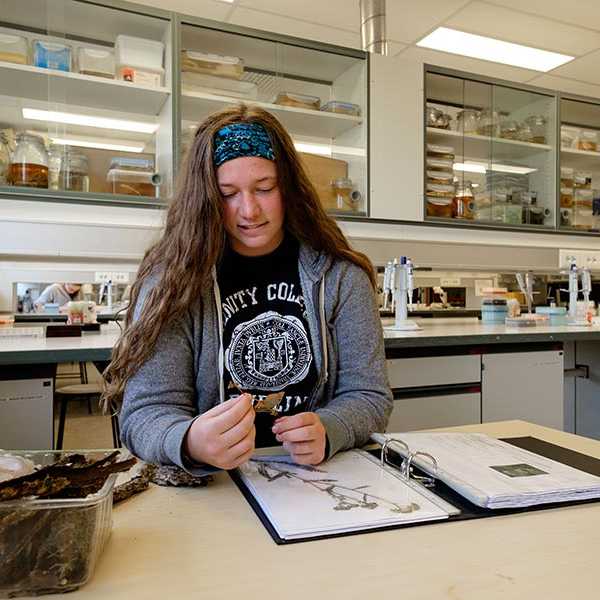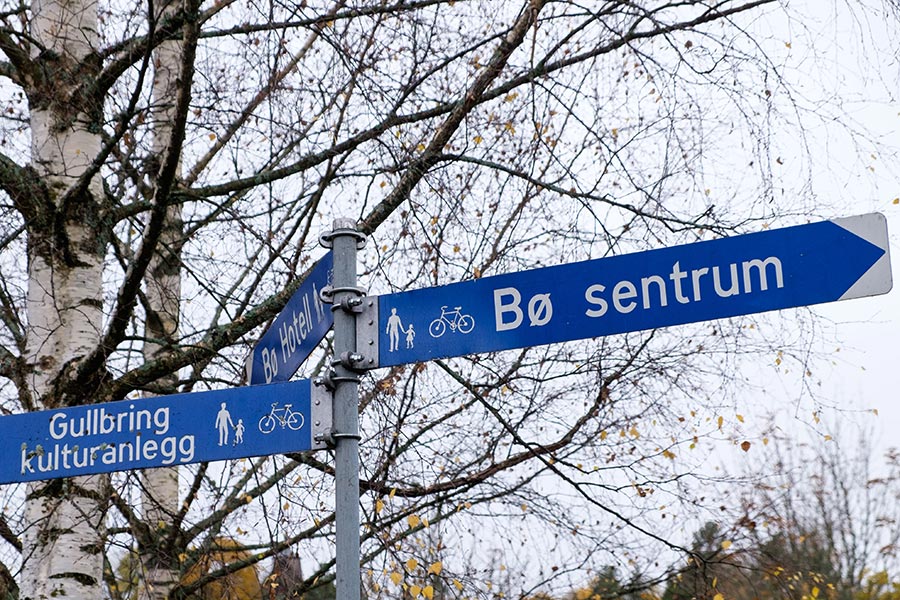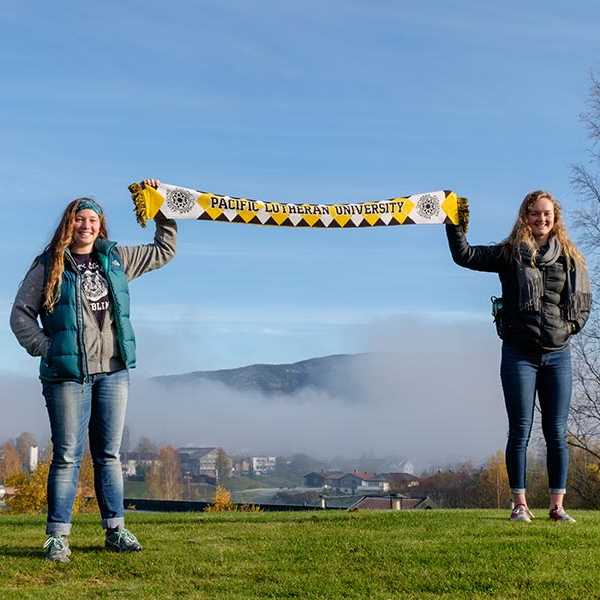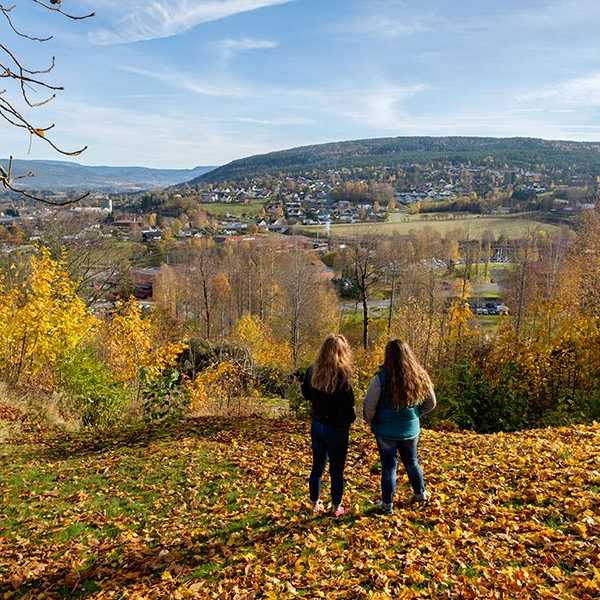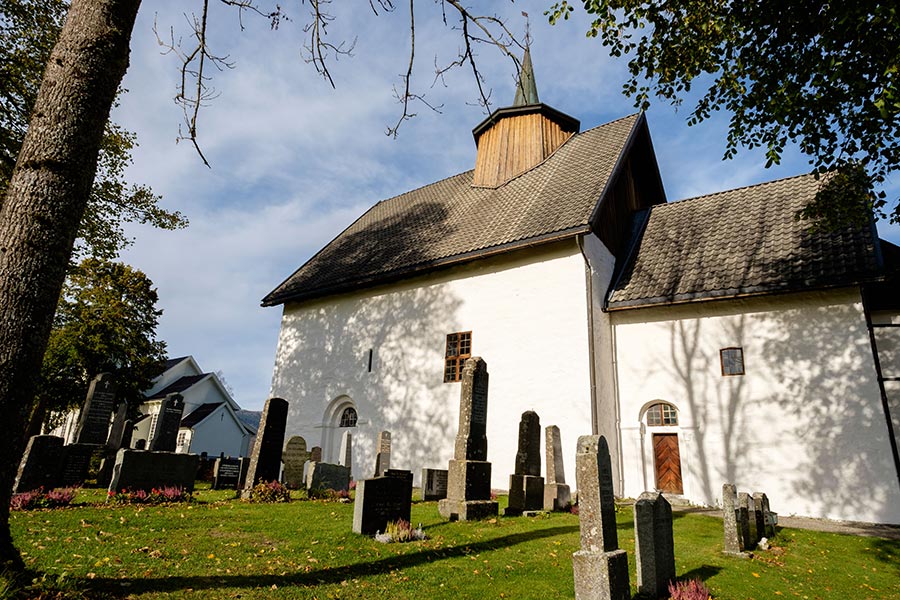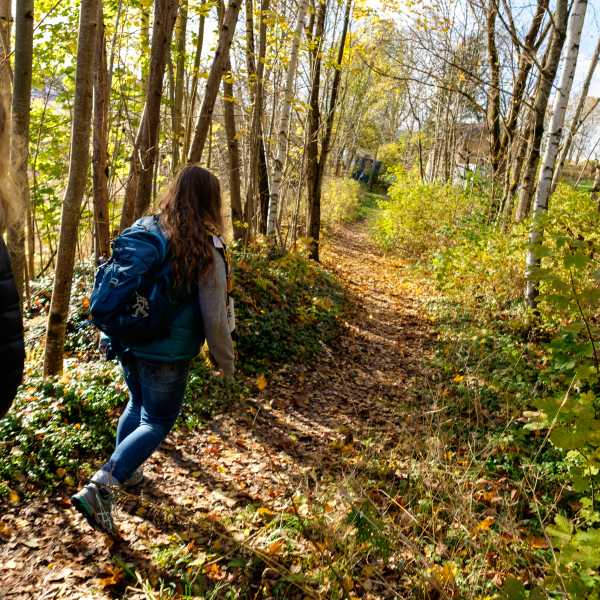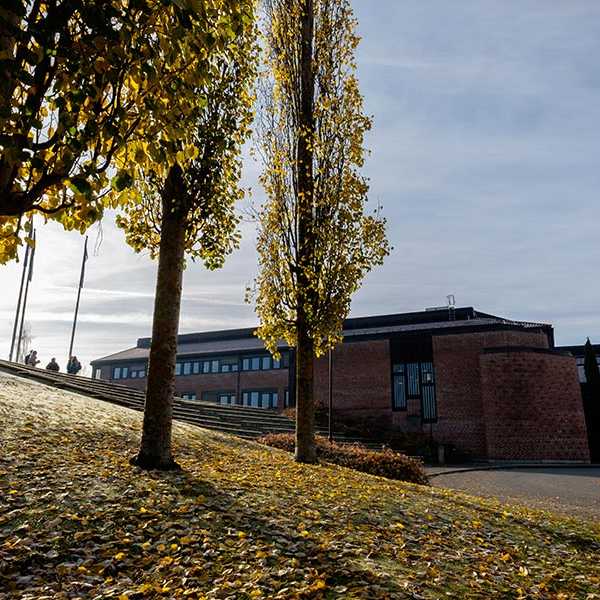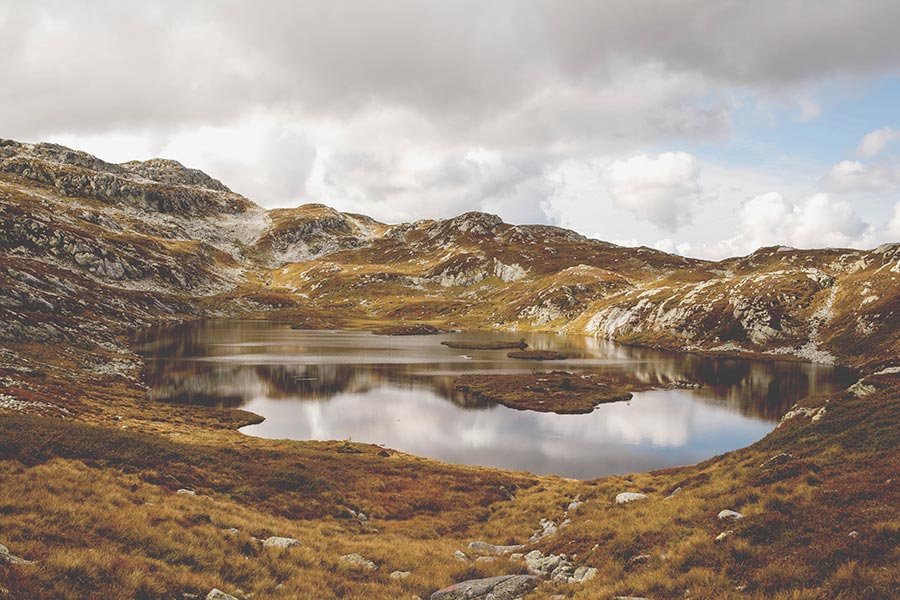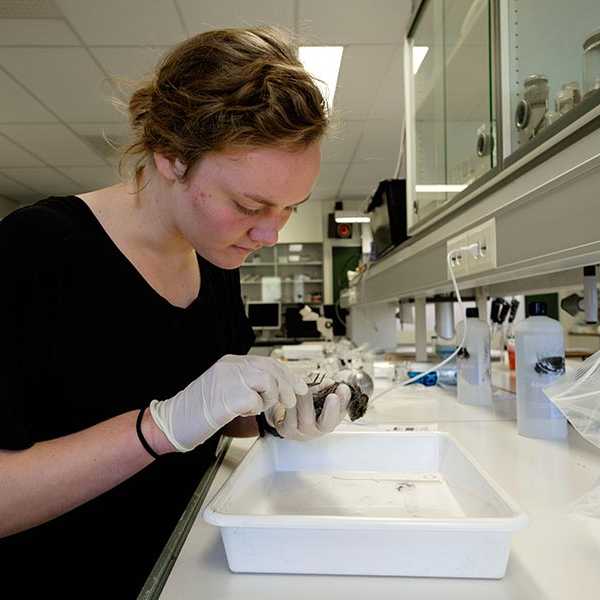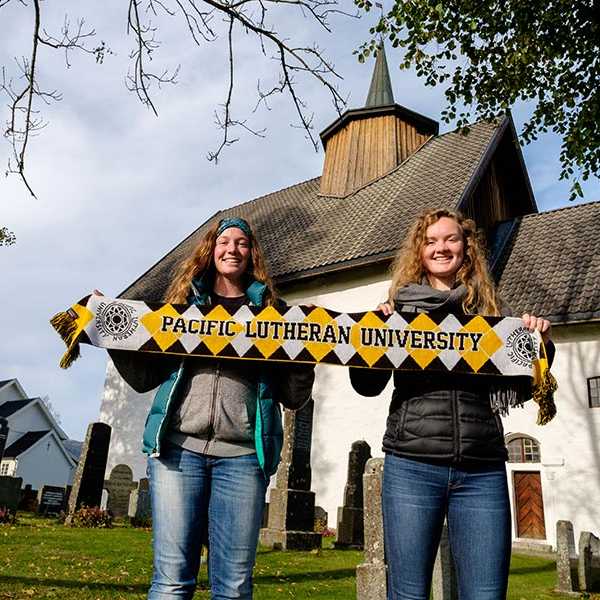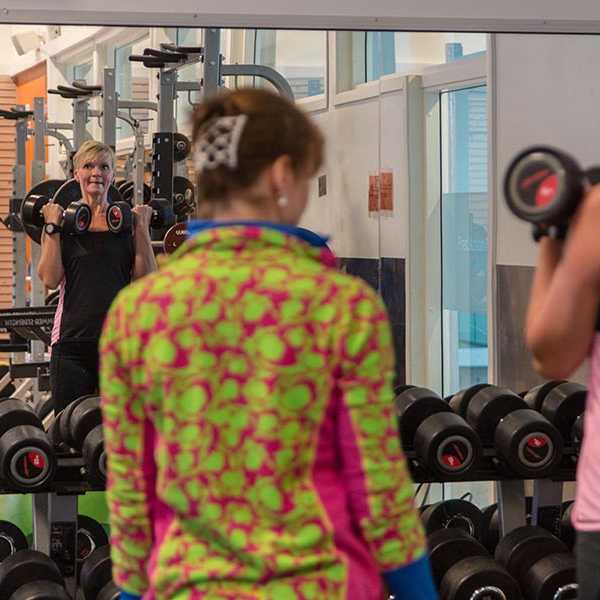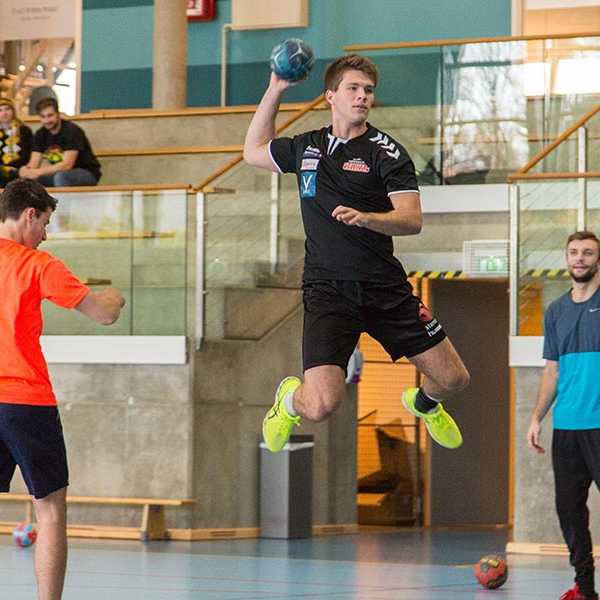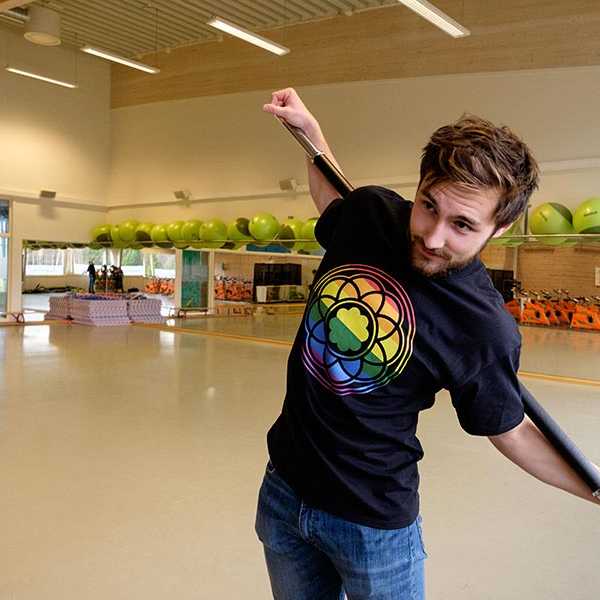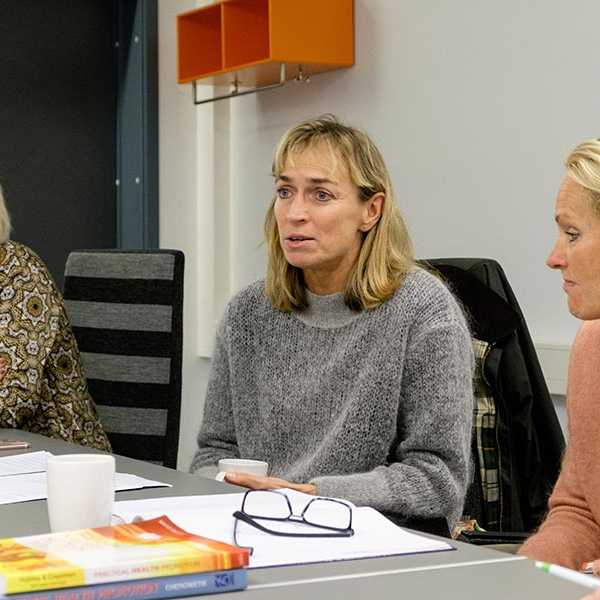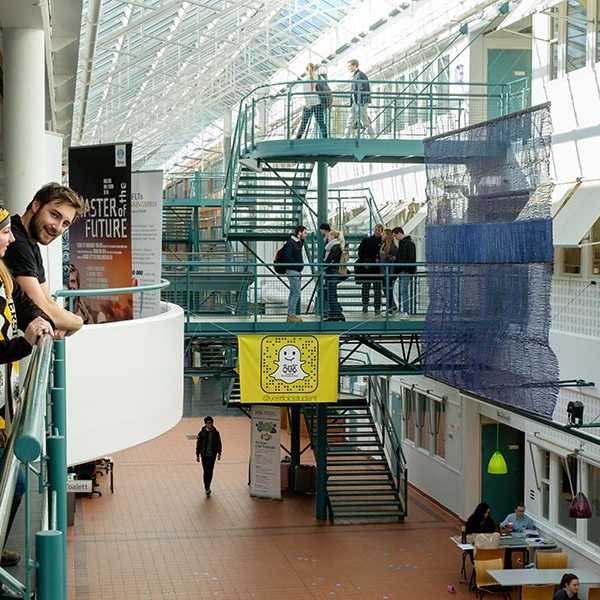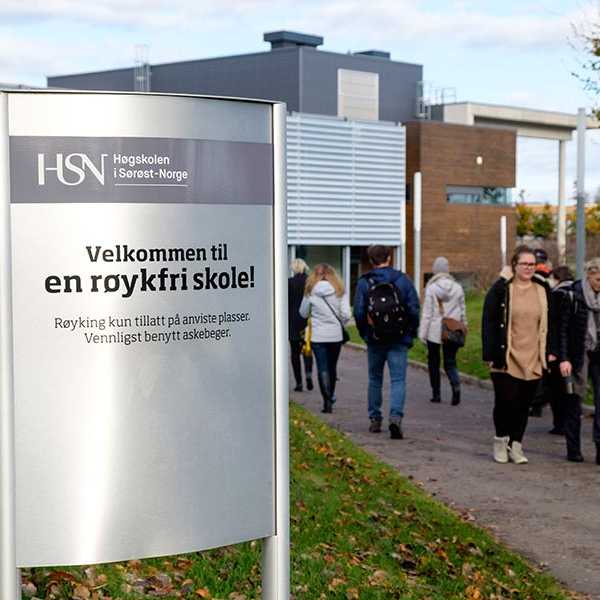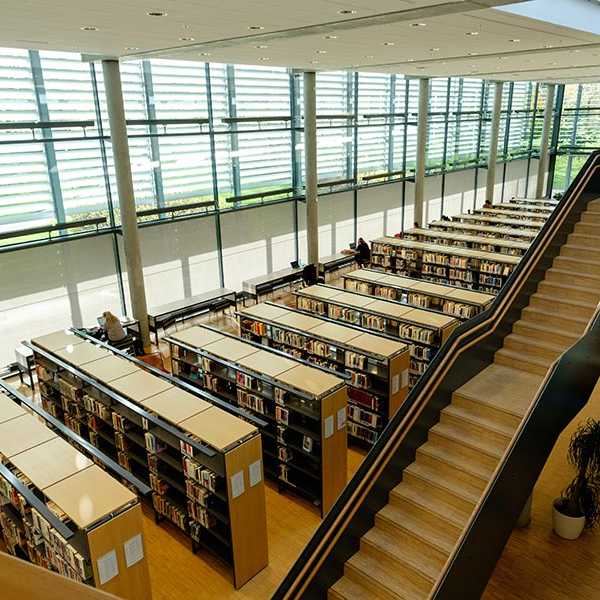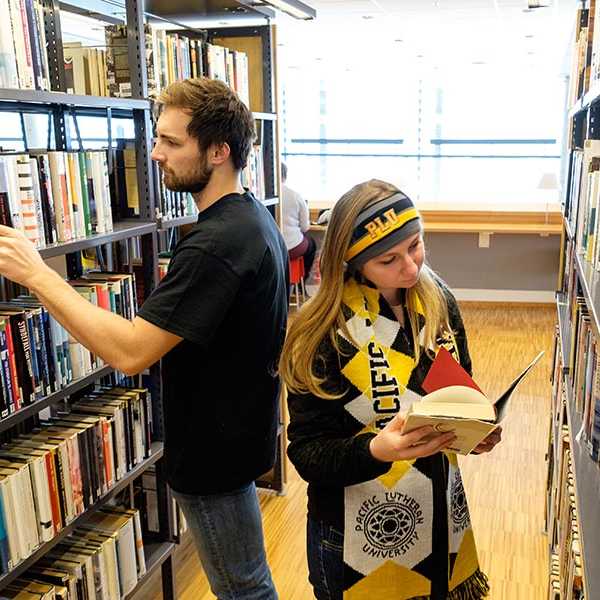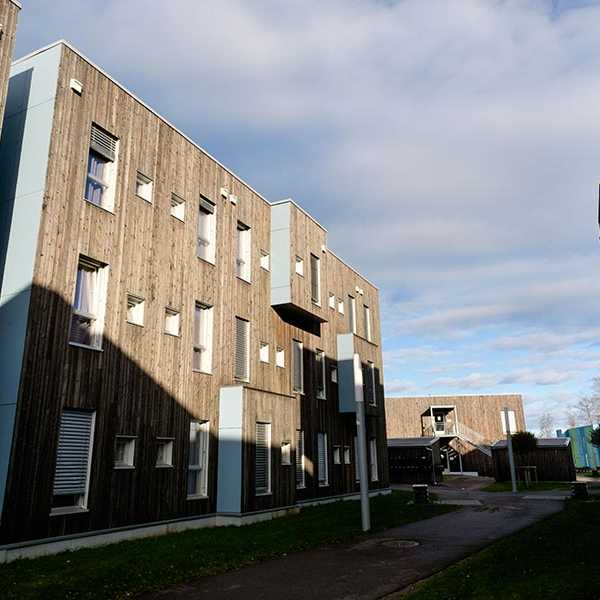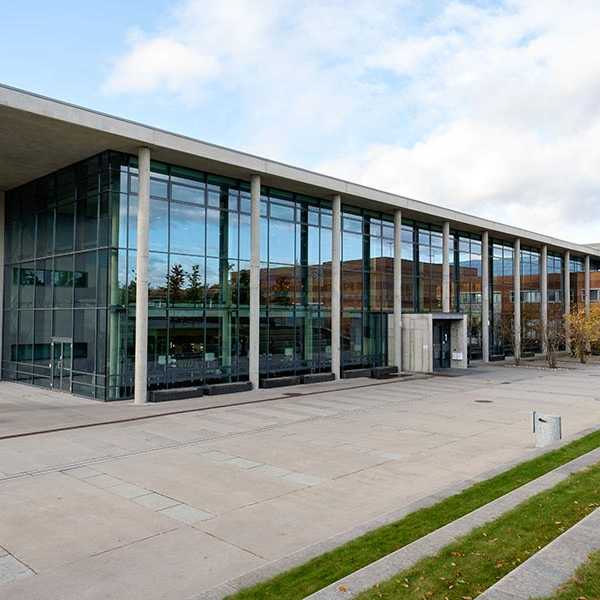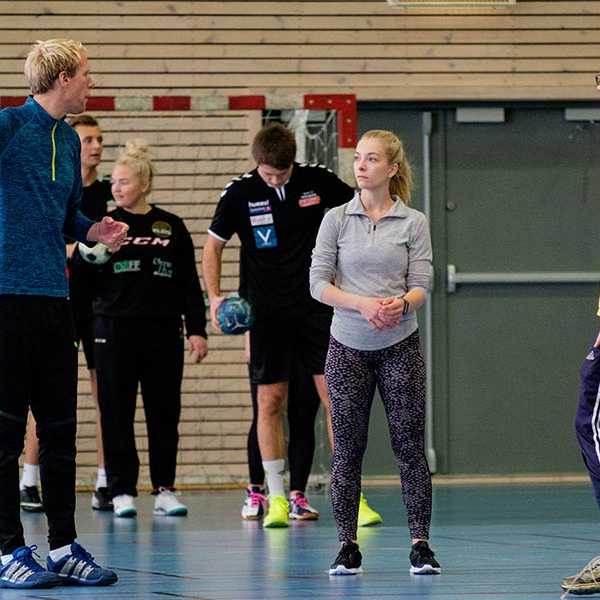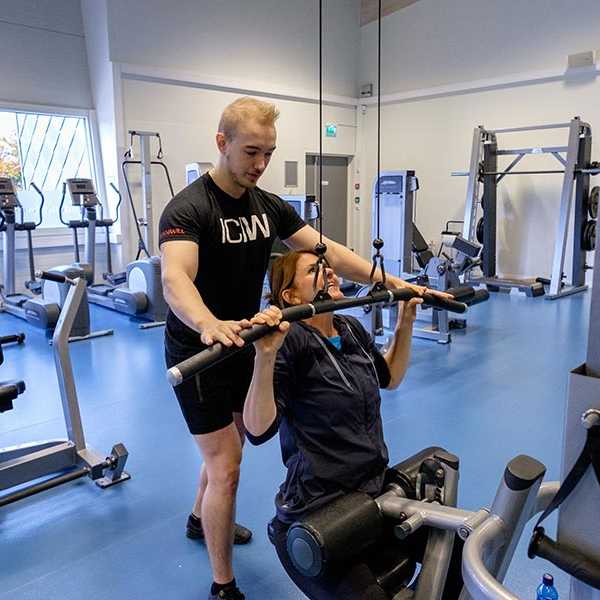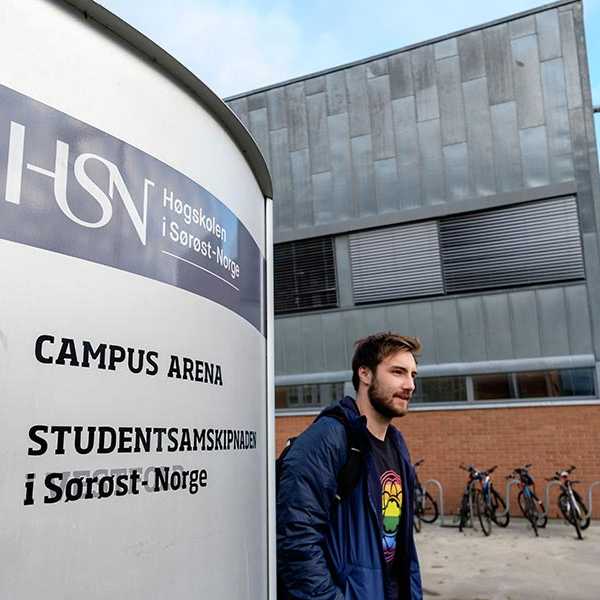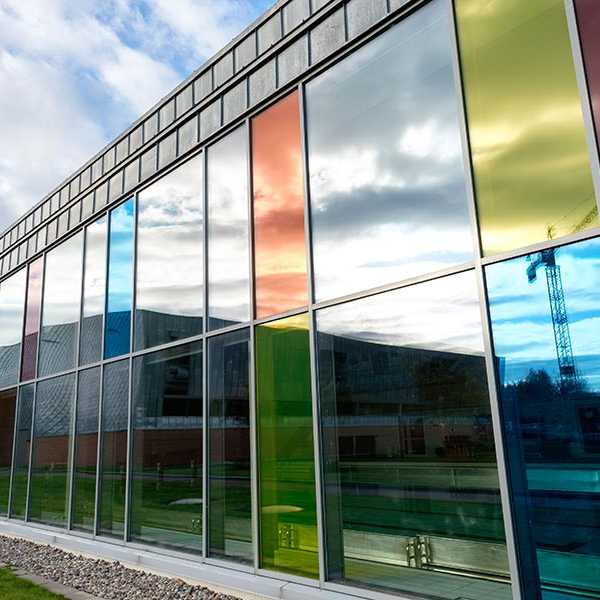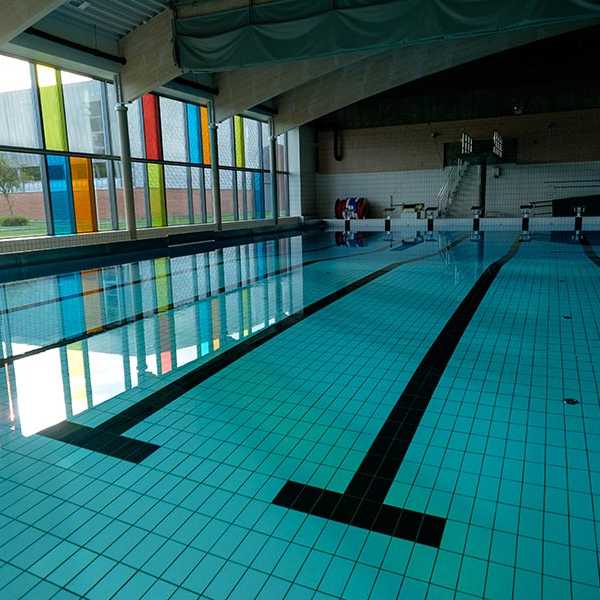More than a century after Pacific Lutheran University was founded by Norwegian immigrants, the university maintains its connection to the founders’ homeland through study away programs. Students travel more than 4,500 miles to extend their interdisciplinary knowledge in big cities and small villages alike, gaining a global perspective that’s equal parts foreign and familiar. While the sites might be new, Lutes are exposed to common values that tie PLU to Norway ― both the historical and the contemporary. A ResoLute writer and photographer traveled to Norway in the fall to get a glimpse of our roots ― våre røtter ― through the eyes of students.
Kara Barkman ’19 and her fellow Lutes studied in Norway, but their footprint extended well beyond the city limits of Oslo: Amsterdam, Austria, Berlin, Bergen, Copenhagen, Denmark, Ireland, Italy, Lithuania, Liverpool, London, Paris, Poland, Prague, Scotland, Spain, Sweden. The list of extended-weekend adventures they racked up rival travel logs of people twice their age.
“I’ve learned a lot about myself,” said Barkman, one of 10 Pacific Lutheran University students who studied away at Bjørknes University College in the fall. “This program is one of the reasons I came to PLU.”
Barkman and her classmates participated in a peace and conflict studies program, alongside Norwegian students in small classrooms that mirror PLU’s intimate teaching environment.
During one of the fall lectures, Barkman spoke up with confidence.
Instructor Cathrine Talleraas, a guest lecturer from the world-leading Peace Research Institute Oslo (PRIO), asked students to pull from their personal experiences with immigration issues as they relate to the economy. PLU students offered examples such as the debate around immigrants’ participation in free and reduced lunch programs in the United States, as well as the prevalence of Hispanic workers in farming communities in Eastern Washington.
“Lots of times, migrants are the only ones willing to do that work,” Barkman said. Talleraas immediately tied the example back to the negative impacts Brexit has had on the labor force in the United Kingdom.
The interaction epitomizes the goal of the program at Bjørknes: to put local practitioners in front of the students and draw connections across borders.
“Everything feels so relevant,” Corinne Donohue-Mercie ’20 said of the curriculum.
Next up, the students headed to an informal brown-bag seminar ― a theoretical debate between faculty members.
Students lounged on orange couches, some snacking on their lunches, as their professors pitted optimism against pessimism. Following a spirited debate, with some humor sprinkled throughout, moderator and professor Hilde Restad announced to the room: “Who wants to tell them they’re wrong?”
“It challenges students to bring up big issues in short format,” said Claudia Berguson, associate professor of Norwegian and Nordic studies at PLU, who observed the gathering.
The seminar was another example of the teaching style emphasized at Bjørknes ― faculty immersed in a learning exchange with the students in a casual environment.
“Here everyone knows each other’s names,” Restad said. “The students can knock on our doors. We don’t really have office hours.”
Torstein Dale-Åkerlund, head of studies for the peace and conflict program, says that’s one of the ways Bjørknes resembles PLU. “Although, PLU is much bigger,” he quipped.
The college in the heart of Oslo has an enrollment of about 1,400; the program itself is even smaller, with about 150.
Part of Bjørknes’ allure is its location. Its campus is surrounded by humanitarian organizations from many walks of life, which have helped Oslo earn a reputation as a primary actor on the world stage.
“Oslo is a hub for studying what we do,” Dale-Åkerlund said. “We really try to tap into that environment.”
That means the college brings in experts in the field, including Talleraas from PRIO. And sometimes it means the faculty members are the experts.
Restad, for example, is regarded as an authority in American exceptionalism and foreign affairs, and often is called upon for national television interviews ― in Norway and the U.S. ― to discuss politics and policy.
Another professor, Henrik Syse, is a member of the Norwegian Nobel Committee. “He’s one of the few who actually decides who gets the peace prize,” Dale-Åkerlund said.
But Syse’s esteemed status doesn’t mean he is super serious.
“He’s really goofy,” Barkman said of Syse, who taught “Ethics of War and Peace” in the fall. “He’ll quote Monty Python in class. It’s a cool experience to be learning about these heavy issues and developing who you are while also being under the guidance of these really established people.”
Dale-Åkerlund says the approach prepares students for a higher level of learning.
“We really challenge our students intellectually and academically with contemporary issues related to topics that they study,” he said. “I think we have a lot to offer the students here.”
Outside the classroom, students are exposed to valuable experiences they can’t get anywhere else ― including attending the exclusive televised interview with the Nobel Peace Prize laureate at Oslo City Hall.
“We encourage our students to really use Oslo for what it is,” Dale-Åkerlund said, adding that the multicultural society offers learning experiences every time students venture out into the city. “They really get to know Oslo.”
Oslo, Norway
That begins with a so-called “crash-course” introduction when they first arrive. Students are paired with buddies who show them the ins and outs of the city, its transportation, culture and language. It lasts three to four days, and is heavy on excursions.
“The first week was a lot of just getting lost and finding our way back,” Barkman said. “I love Oslo public transportation. It’s so easy to navigate.”
Nick Brundage ’19 said that ease extended to flights across Europe. “It’s so easy (to travel), since we have so much free time,” he said of the workload at Bjørknes.
Still, he admits the downtime also offered challenges. While classwork throughout the semester is minimal, finals work weighs more heavily on grades. “It’s one big test and one big paper,” he said. “You’re not doing work in the classroom.”
While the distribution of work is different, the study away program is rigorous.
“We have high demands,” Dale-Åkerlund said. “We really want students to get the best out of the semester with us.”
The program isn’t just targeted to international relations or communication students. The curriculum pulls from many different academic disciplines.
“We are all over the humanities and the social sciences, basically,” said Restad, who taught “Terrorism and Counterterrorism” in the fall. The other classes students chose from last semester included “Introduction to Migration” and “International Political Thought.”
“We’re always revising,” Restad said of the courses offered, adding that they often shift with current events.
“The classes are fantastic,” Barkman said, emphasizing the value of her Norwegian classmates.
“They bring up wars and conflicts that I’ve never even heard of. Every day after class, I’m going back to my apartment looking up all these different conflicts,” she added. “It’s really fun to have conversations comparing America and Norway and differences in culture and politics.”
“The first week was a lot of just getting lost and finding our way back. I love Oslo public transportation. It’s so easy to navigate.”
– Kara Barkman ’19
On a more basic level, the program envelops students in what quickly becomes a second home in Oslo.
“They are always looking out for us,” Brundage said. “They really care.”
And that care, Restad says, is one of the many ways Bjørknes is an ideal fit for Lutes.
“There’s a kinship, I think.”
BØ, TELEMARK
More than 90 miles southwest of the bustling international city, Jackie Stenberg ’19 stood on the hilltop grounds of a picturesque, centuries-old stone church, taking in a much slower side of Norway.
Growing up, Stenberg says Glacier National Park in Montana was her backyard. So, it was fitting that she decided to study alpine ecology in the rural part of a country with ties to her family history.
“It’s cool getting the heritage and the nature,” Stenberg said.
Stenberg and Kristi Floyd ’19 couldn’t stop gushing about the sweeping views of rolling hills and the endless recreational opportunities just steps from their residences in Bø, a village in the Telemark region. The college town is home to fewer than 6,000, and a walking tour of the area around University College of Southeast Norway takes less than an hour.
“Some people think it’s too small, but I love it,” Floyd said. “There are always things you can do.”
Among the activities, hiking is at the top of the list. Stenberg and Floyd said they hiked all the time; sometimes they hiked into the woods and stayed overnight.
“The first week we got to go on this really cool field trip up on a nearby mountain,” Floyd said. “We spent a week out there looking at plants and figuring out species.”
Stenberg said the trip ― an invigorating introduction to the alpine ecology program ― informed their studies throughout the semester that followed.
“We got that initial knowledge right off the bat. For the rest of the semester, in lectures, we can reflect back onto that field experience,” she said in October, midway through the program. “You can tell that the professors are passionate about their place.”
Both Lutes are double majoring in biology and environmental studies, and the alpine ecology program is the perfect marriage of the two, they said.
It’s made up of three courses: “Alpine ecology,” “Alpine Biodiversity” and “Sustainable Tourism.” In addition to the fieldwork, the students worked in labs, sometimes alongside graduate students conducting research on various alpine species. The hands-on work is ideal for active students, Floyd noted.
“It’s not like you’re bundled up in a classroom all the time,” she said. “I don’t like sitting at a desk for long periods of time. It’s nice to get out and apply things right away.”
Although the classes are taught in English, their classmates come from around the world. “I’m working with people from Norway, France, and Spain,” Floyd said. “It’s invaluable to come together with people from different places and gain new perspectives.”
The newfound international friendships included Sunday-night dinners, for which everyone made a dish from back home. They also got together to play various sports, including the Norwegian staple handball.
“It’s competitive, but still really fun,” Floyd said.
Bø, Telemark
Stephanie Reinhardt, a German professor at the Bø campus, is responsible for alpine ecology and other courses. She says the location is perfect for applying the curriculum they teach.
Norway is known for having massive alpine areas, or areas above the forest limit. “Those areas are more and more exposed to environmental impacts and human impacts,” she said.
That’s because as climate change advances, species in alpine regions can’t migrate to escape the effects.
“For the alpine species, there’s no more space for them to move upward,” Reinhardt said. “That’s the main goal of this program, to provide students insights into those challenges that alpine areas are facing.”
And the environment mirrors that of the Pacific Northwest, meaning students can often apply what they learn in Norway back home.
“Some people think it’s too small, but I love it,” Kristi Floyd ’19 said of the town. “There are always things you can do.”
Reinhardt stressed the program isn’t for the faint of heart. The introductory trip to the mountain includes a long hike hauling several days of necessities; the accommodations are simple, without water or electricity. “It’s important for the students coming here to be prepared,” she said.
But the hard work is worth it for students who value nature and sustainability, Floyd says.
“I just love Norwegian morals,” she said. “They really value the outdoors, they really value education and healthy living. They are also environmentally friendly.”
The campus in Bø also accommodates students looking at other disciplines.
Kelsey Larson ’11 studied English writing and Norwegian at PLU. She says the experience in Telemark improved her language skills and her global perspective, aiding her post-graduate success, including a stint at The Norwegian-American newspaper.
“It was intimidating, but I learned a lot,” she said. “I never would have become as advanced if I hadn’t lived there. You just don’t get the same experience taking classes in the states.”
VESTFOLD
Sitting around a table in late October at the scenic Vestfold campus of University College of Southeast Norway, all Norwegians present wore fitness trackers. The weather outside was getting colder by the day, and snow was in the forecast. Still, exercise was part of the daily routine, inside and outside the classroom.
“It’s so grounded in our bodies,” said Trine Thoresen, leader in the university’s Department of Outdoors, Sports and Physical Education. “Most Norwegians embody health promotion.”
Thoresen says that if Norwegians aren’t active, they don’t feel great. Luckily, the area offers plenty of recreation: access to woods, sailing, kayaking, a national park, the fjord and more.
In fact, getting outside is how students begin their studies in the exercise and health management program there, the newest addition to the Norway Gateway study away options offered through the Wang Center for Global Education.
“We start this course by going to the island and staying in a tent,” said Hilde Grønningsæter, another faculty member in the department. “It’s sort of an orientation.”
PLU doesn’t have students enrolled in the program ― yet. The goal is to get them there. It’s perfect for students who are physically fit and serious about movement or exercise studies, such as kinesiology, physical therapy, physical education, sports medicine, rehabilitation or nursing.
Vestfold
“Physical activity is the center of the study,” Grønningsæter said. “It’s the tool.”
The application deadline for PLU students interested in studying at the Vestfold campus is May 1.
Karen McConnell, associate dean of kinesiology at PLU, says the program allows students to learn from another perspective, alongside others from around the world, in a country that does a better job at health promotion.
“They are more fitness minded and health promotion is built into the culture,” McConnell said, noting that the country’s approach is very prevention-oriented. “It’s a way of life.”
The program consists of two courses, which have a dual focus: project planning centered on health promotion and practicum placement. Students work a minimum of 30 hours for about two weeks at the local prison, rehabilitation centers, schools or others sites that expose them to practical experience with various target groups. Many of them work beyond the minimum.
Thoresen says it helps students learn how to practically apply the theoretical knowledge they gain, preparing them to apply their degree after graduation. “It has a strong practical approach,” she said of the program. “The jobs aren’t always that obvious.”
Site placements happen after introduction to the curriculum, in the middle of the semester. Participants write reports following their placements as part of their exam.
“We start this course by going to the island and staying in a tent,” said Hilde Grønningsæter, a faculty member at the Vestfold campus of University College of Southeast Norway. “It’s sort of an orientation.”
Upon developing the courses, administrators in Vestfold focused on young people and unemployment throughout Europe; the courses are a work in progress. They examine, in part, how nutrition and physical activity may be used to promote employment.
“We are working to understand how health is promoted and how to change habits,” Grønningsæter said.
Norway has an incredibly strong labor market act, which regulates the relationship between employers and employees. It’s one of the many ways health promotion is institutionalized in Norwegian society, and it’s one of the foundations of the curriculum for students in the program at Vestfold ― especially their practicum placements.
“It’s important to discuss this,” Grønningsæter said. “We have a focus on what they are going to do afterward.”
Outside the classroom, students have plenty of opportunities to practice what they preach. Vestfold is small and easy to navigate, with beautiful scenery that entices visitors to explore on foot.
“You don’t need a car,” Thoresen said. “It’s easy to get around.”
McConnell said at least five PLU students are interested in the program so far. She said many of them came to the university specifically because this study away opportunity was in the works.
McConnell believes they aren’t alone.
“A lot of students are interested in outdoor recreation,” she said. “We don’t have anything parallel to that program here.”


